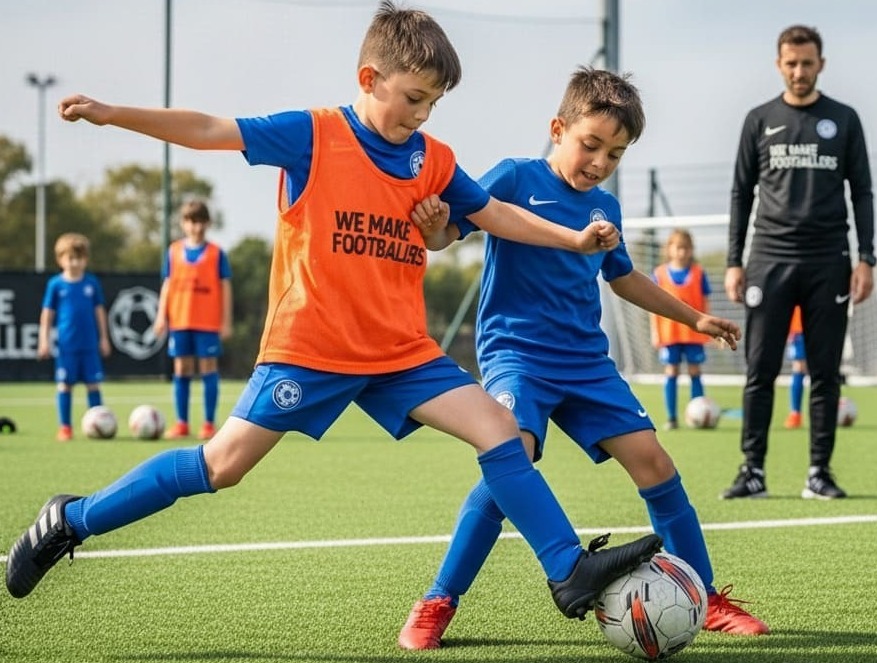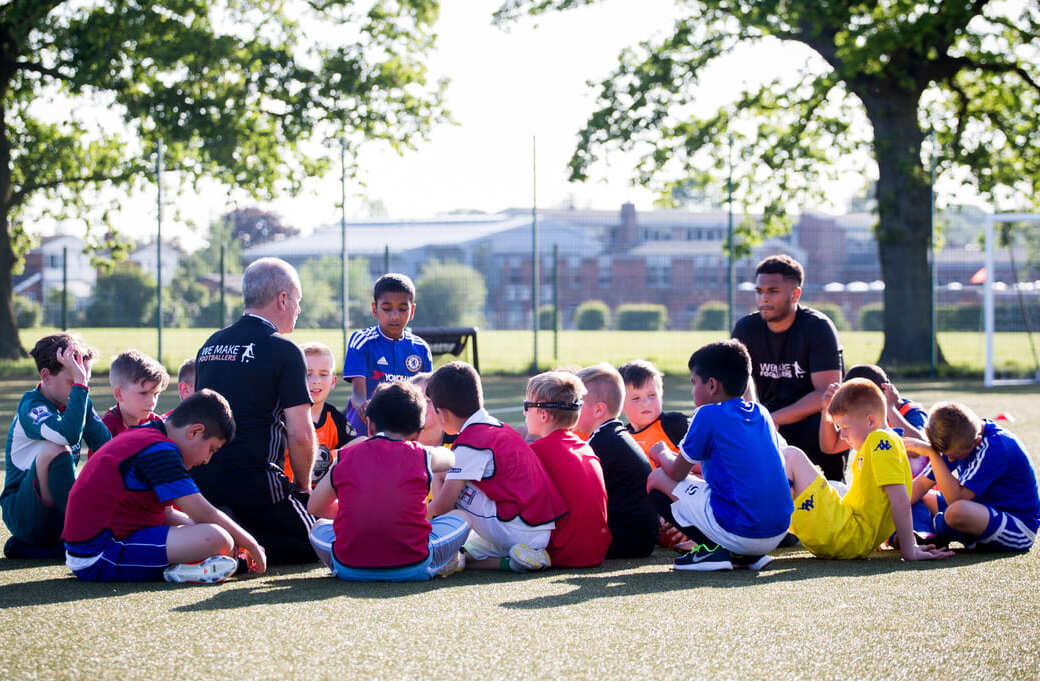Best Football Passing Drills to Improve Ball Movement
The best football passing drills for your team set the foundation for superb ball movement, enhanced possession, and game-winning creativity. Every coach knows that great passing relies on both vision and precise execution.
Today, many strategies and opportunities exist for coaching teams and players individually. But no one has forgotten the basics. Our article will tell you about the basic and most important and effective movements, passes, and assists - without which you cannot build a winning team. So? Let's get started!
The Best Football Passing Drills for Your Team
"1-In 1-Out" is one of the most incredible drills. When players establish four lines, an entire square is created. One player receives a pass from the middle and immediately turns around to pass to the other line, helping the player learn a quick turnaround. A football player must focus on control and precision while using variations like one-touch or the weaker foot.
Another notable drill is the “4-on-3 Attack” exercise, mimicking game-like pressure. Here, four attackers challenge three defenders in a confined grid with a full-sized goal at one end. This drill demands creative passing patterns in football, as attackers must decide when to dribble, pass, or take on defenders to create scoring opportunities. It strengthens passing training and boosts off-the-ball movement, enabling players to exploit space and transition rapidly from defense to attack.
Passing the ball quickly and improving your reaction time are very important. A small group + "passing the ball around the net" exercise equals successful practice and improvement of these skills.
How is it done?
Players divide into pairs and work in two small squares marked with cones. One of the partners starts the pass from his square and must receive the ball within the designated area. The partner gets a penalty point if the ball is knocked down while receiving. This drill is designed to develop a sharp first touch and quick control of the ball in a confined space, a skill needed in crowded game situations.
Additionally, creative drills like “Guard the Castle” task players with protecting a centrally placed target while teammates work to knock it down through rapid passing.
Coaching Points for Running Youth Football Drills
Begin by reinforcing proper body positioning; encourage players to use the inside of their foot to execute crisp, low passes. Emphasize head-up play to constantly scan the field for open teammates—crucial for practical passing training.
Coaches should stress the importance of timing. Players must be positioned before receiving the ball to streamline the transition from pass to move. Consistent practice inculcates habits that make accurate, one-touch passes second nature. Keep the atmosphere competitive yet supportive by providing constructive feedback during drills.
Key points to stress include:
-
Quick decision-making and rapid support movement after passing.
-
Maintaining a balanced stance and being ready for both attacking and defensive adjustments.
-
Keeping communication open so teammates can call for the next pass.
-
Consistency in technique to build muscle memory and spatial awareness.
Choose Simple, Fun Drills
Drills like “1-In 1-Out” and “Grid Passing” perfectly balance engagement and technical development. They reinforce the fundamentals of football drills for passing while ensuring sessions remain fun and stress-free.
Keep the environment light and enjoyable by incorporating creative elements that foster experimentation, such as performing different turns or passing with the non-dominant foot. A fun drill builds skills and instills a love for the game, ensuring sustained motivation throughout the season.
Change Up Drills Often
Implement a rotation system where you shift seamlessly from a passing accuracy drill to a dynamic team-based exercise like “4-on-3 Attack.” Varying drills maintain high intensity and target multiple aspects of play—from improving first-touch technique to developing spatial awareness and quick decision-making. This versatility is essential for preparing players for the diverse scenarios encountered during a match.
Make the Drills Competitive
Adding a competitive element to training sessions transforms drills into exciting challenges that mimic live match conditions. Competition pushes players to excel, sharpen their technique, and outthink their opponents. Even in age-focused settings, structured competition helps build resilience and fosters a winning mentality.
For instance, in the “Grid Passing” drill, transform the exercise into a contest by tallying the number of consecutive successful passes between partners without error. In “Guard the Castle,” players rotate frequently to ensure everyone faces offensive and defensive challenges. Such competitive tweaks boost engagement and simulate the pressures of game situations, teaching players to perform under stress while maintaining creative fluidity in their passing patterns in football.
Get Lots of Footballs
A crucial aspect often overlooked in passing training is the availability of ample equipment. Maximizing touches and repetitions during drills requires plenty of footballs. More balls mean less downtime waiting for a pass to be returned and more active engagement from every player. Multiple balls allow coaches to run simultaneous drills, ensuring each player remains fully involved throughout the session.
Whether during large-group drills like “4-on-3 Attack” or partner-based exercises such as “One Touch Pairs Passing,” an abundant supply of balls increases session intensity and provides the volume of practice required to perfect technical skills. Continuity and repetitive practice form the backbone of practical passing training.
Advanced Tips to Optimize Your Passing Drills
To further elevate your team’s performance, integrate advanced strategies that refine technique and foster team chemistry.
Consider these additional tips:
-
Set clear success criteria: this could be a minimum number of consecutive passes or the execution of specific football patterns for each session.
-
Use peer feedback: this creates a favourable atmosphere for learning and encourages collective problem solving.
-
Use video analysis: this allows players to visualise their movement, positioning and passing quality.
-
Increase the complexity of drills: change the pitch size, limit the number of touches or introduce unpredictability by changing the speed of the ball.
-
Maintain a trend of improvement: hold regular mini-tournaments as part of training sessions, where teams compete under match conditions, reinforcing the tactical aspects of passing football.
Take Your Football Training to the Next Level This Season
The drills outlined—from the simple “Grid Passing” to the competitive “4-on-3 Attack”—are designed to enhance individual technique and overall team performance. Adopting these football drills for passing and moving will help your squad maintain possession, create attacking opportunities, and dominate matches with improved tactical awareness.
Commit to updating your training routines regularly with fresh variations, maintain high levels of competition, and ensure sessions are well-equipped for maximum engagement.
Your child is passionate about football and dreams about improving the passing drills? Then you are in the right place. Press here and learn how We Make Footballers camps can make your kid’s dream come true.



